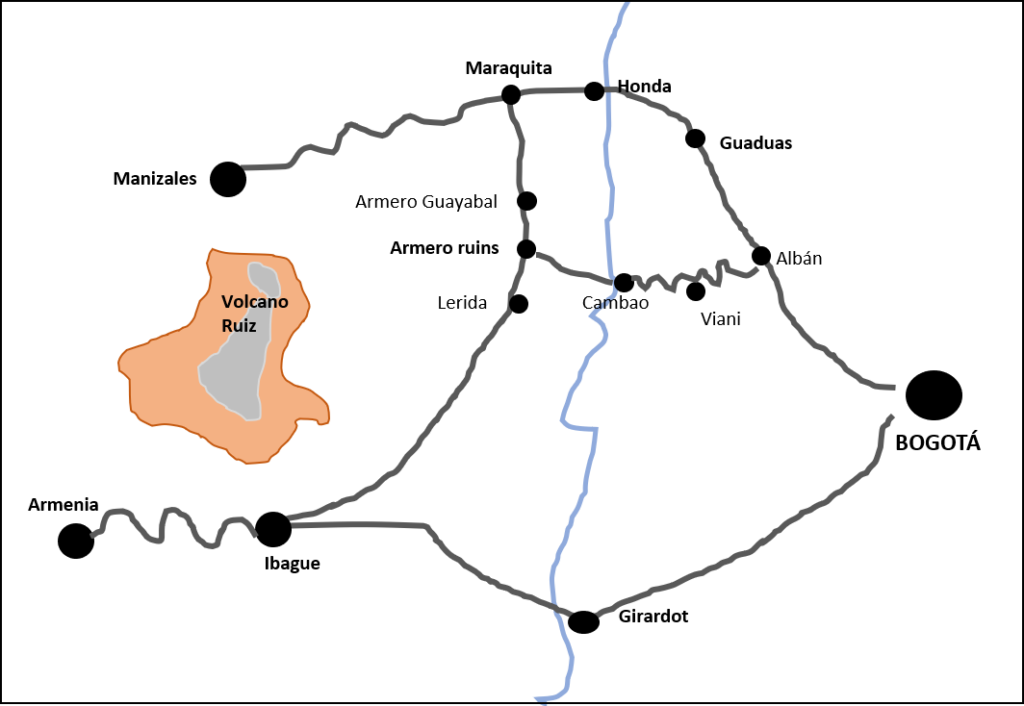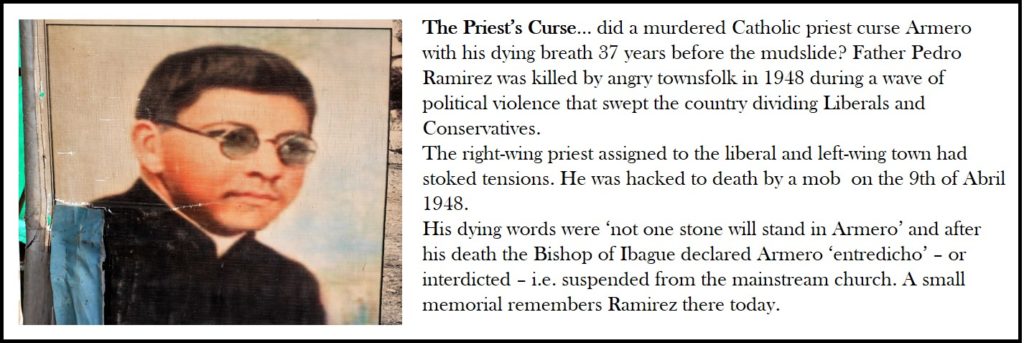Armero on my mind
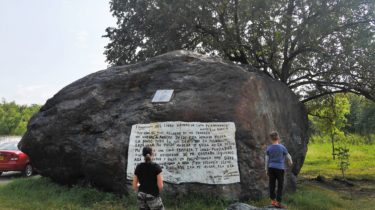
Posted in January 2019
A TOWN TRAGICALLY BURIED IN MUD in 1985 with 23,000 dead – mostly still lying underfoot – hardly seems like a top tourist attraction, with or without ghosts.
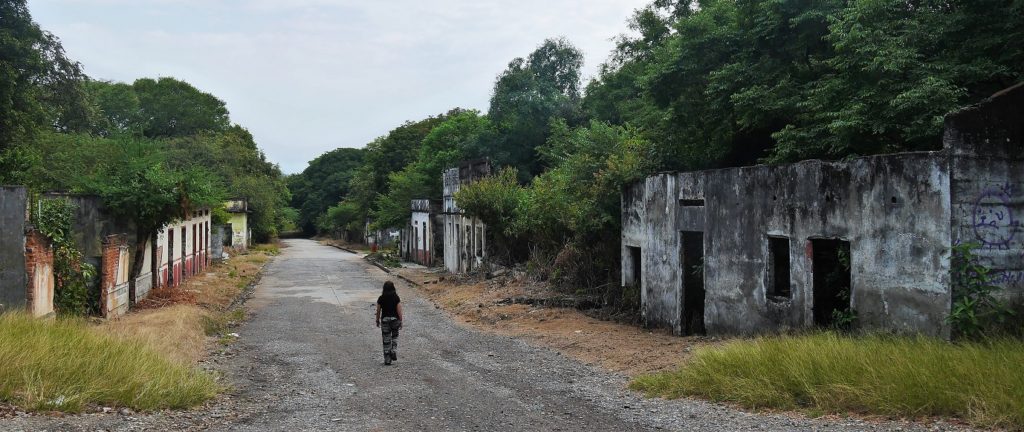
The ghost town of Armero, the sad reminder of one of the worst natural disasters of the 20th century
‘Aren’t you scared of the fantasmas?’ a friend in Bogotá comments when I mention my plan to visit Armero, or what’s left of it. ‘Most people don’t even drive the road through the ruins after sunset’. But I’m drawn to the aftermath of one the world’s worst natural disasters within living memory. And I know that Armero is under Colombia’s collective skin like no other national tragedy (and there’s been a few) and leaves unanswered questions still resonating today.
Like: why weren’t the people evacuated when the volcano erupted? There were several hours between the eruption and the mud-flow. Many people knew the town was at risk so why were they left there to die?
See my post on earth tremors in Bogotá and earthquakes in Colombia…Not Quite Quakes
Once I’m in Armero, help comes in the form of Victor, a local villager who cycles to the ruins every day and offers his services to visitors. He was in his mother’s belly when the mudslide struck, but she made it to higher ground and was one of the first winched to safety by helicopter. This is just as well, as Victor turns out to be an excellent guide.
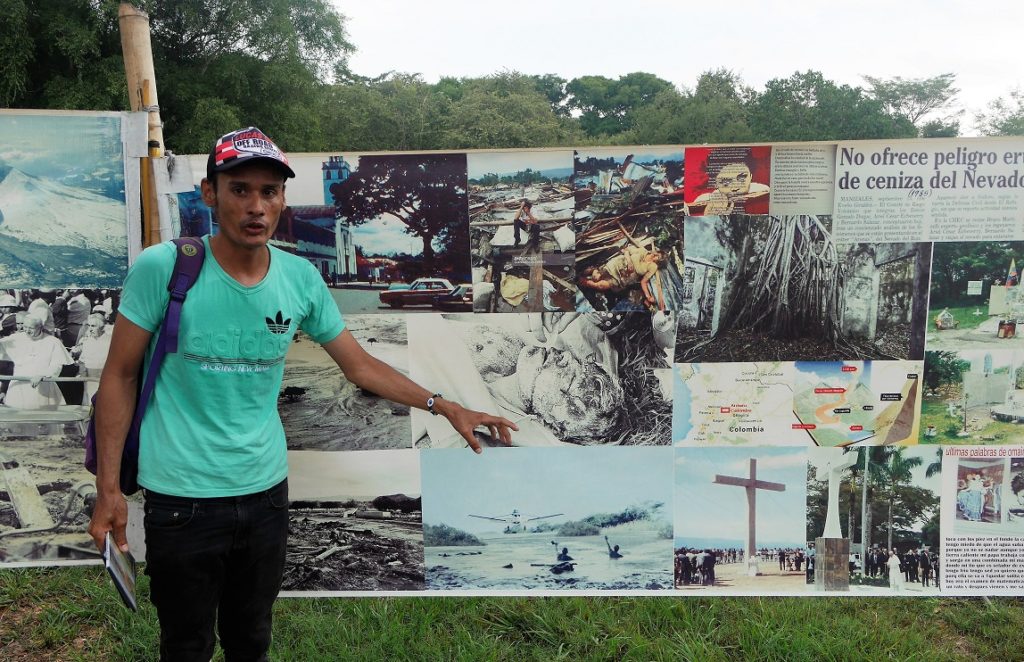
Victor explains how the disaster and rescue unfolded. His mother was rescued from the ruins and mud.
Armero was Tolima state’s second-biggest town and the epicentre for booming rice and cotton farms, explains Victor when we meet at the small visitor centre and snack bar by the main road. It was destroyed on November 13, 1985 by a deadly volcanic mix created by the Nevado del Ruiz volcano, a snow-capped mountain visible (on a cold clear morning) from the higher parts of Bogotá.

Back in 1985, the volcano had been rumbling for months and started spewing ash in the afternoon of the final day. This was a sign of an eruption in progress. At 9.30 pm, superheated lava started melting the icecap of the 5,200 metre-mountain, sending the hot lahar crashing down the 45 kilometres of gullied riverbeds of the volcano’s sides.
At around 11.35pm this, apocalyptic wall burst onto the fertile floodplain of the Lagunillas River. It struck the town when most people were at home in bed.
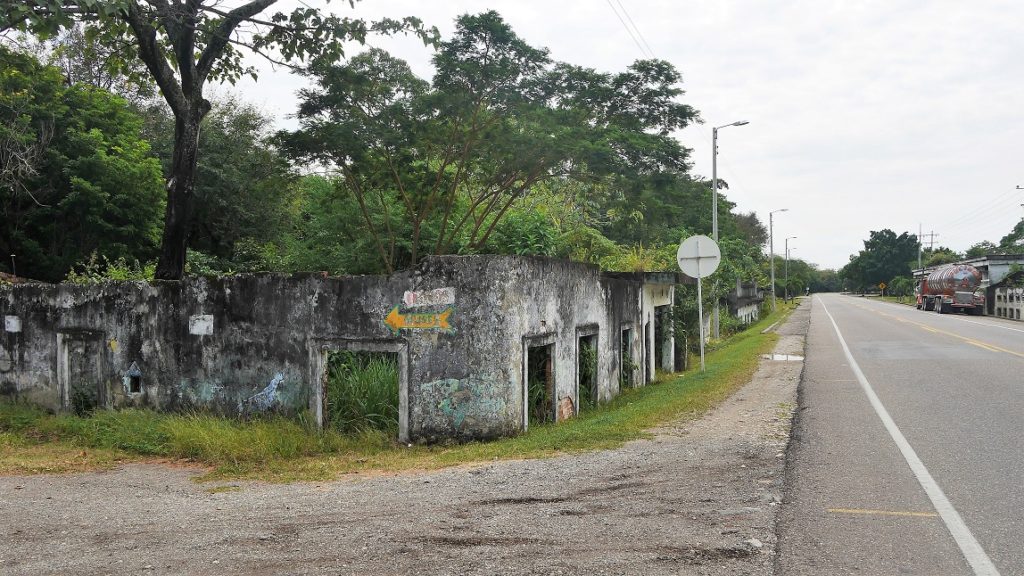
The ruins today at the main road that passes from Maraquita to Ibague
Why didn’t more people evacuate hours earlier when the volcano first erupted? It’s seems that relocating just a few hundred metres to higher ground could have taken people out of harm’s way. And experts had already sent maps showing that Armero was in the path of a likely lahar.
Victor takes a deep breath: we’ve arrived at the crux of the problem. ‘Most stayed because they didn’t believe it would ever happen.’
And behind that is a history of mixed messages, religious dogma and political football in the months leading up to the eruption. The town’s mayor (who died in the mud) had called out the threat but was branded a ‘scaremonger’ by Tolima’s governor. Tolima was one of Colombia’s poorer and ‘hillbilly’ departments, often set against central government, and less favoured by Bogotá. Experts were more focused on the coffee city of Manizales to the east.
On the day of the eruption protocols were in place to evacuate communities around the volcano, but Armero never got a clear message. At 7.30pm – four hours after the ash-fall – the local Red Cross knocked on doors advising people to leave, but the town’s Catholic priest was also telling everyone to stay put in their houses (though he himself fled the town after a ‘bad feeling’). Meanwhile heavy rain dulled the noise of the eruption that might have triggered a more general flight.
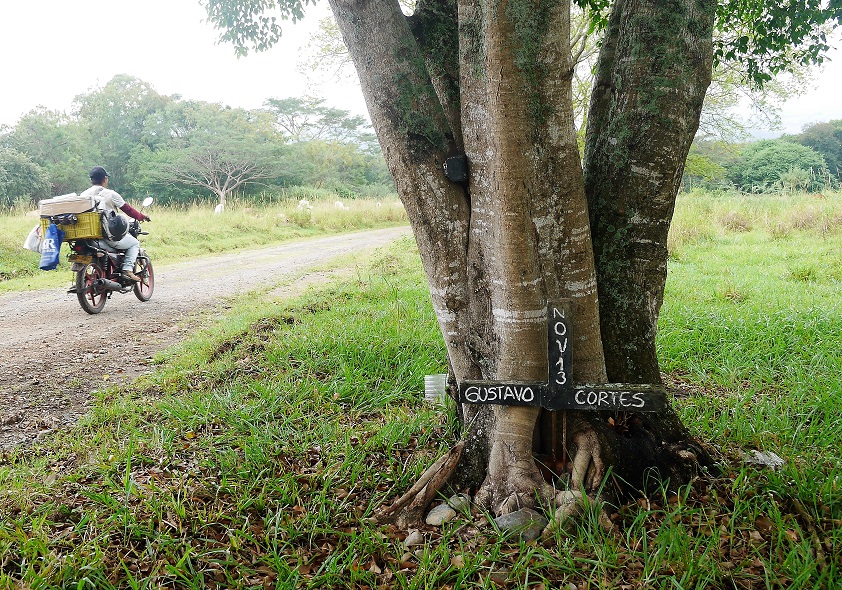
Many townsfolk lied buried under the mud and their bodies never found
Left behind, townsfolk ‘were confused and didn’t want to risk leaving their home just for rumours,’ explains Victor. As he talks, we meander along gravel paths through sunlit woodland. Under this idyll, in fact probably about two metres down (the depth of the mud that entombed the town) are the mangled remains of the once-vibrant community and its inhabitants.
The viscous lahar was like a grinding machine, destroying all in its path. Survivors were terribly injured with gaping wounds, bodies of the dead were horribly mutilated – the few that were recovered.
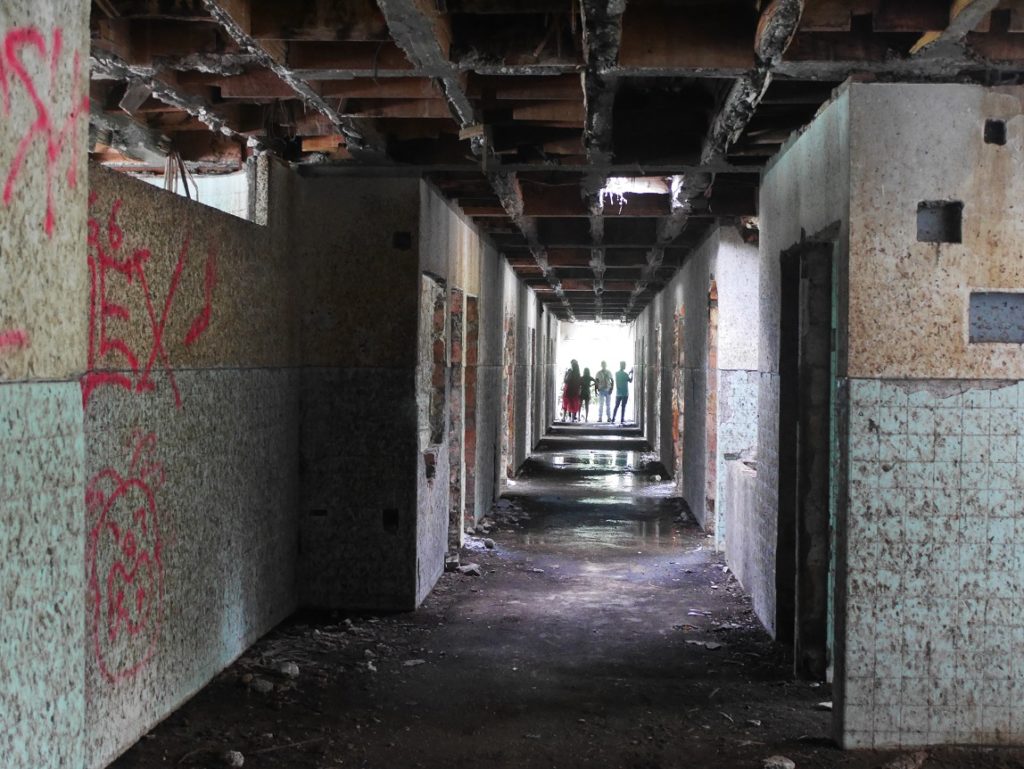
The ruined hospital, ground zero for ghosts
The rescue in the aftermath was slow, the disaster was only relayed to the world the next day by a crop plane pilot, and the metres-deep soft mud made moving around the site impossible in the first hours and many survivors of the initial lahar died of injuries. The Colombian army was reluctant to deploy resources, and civil rescue teams hampered by central government bureaucracy. Even basic implements – digging tools, water pumps – were in short supply.
Removing the massive blanked of solidified mud was impossible, meaning many victims lie buried in what is now effectively a massive grave-site.
Ten years after the disaster some symbolic area were cleared, and human remains reburied.
One cleared area in 1995 is the town’s small plaza, like any other in Colombia but now with trees and a broken cupola, all that’s left of the church, and an enormous cross and kneeling statue of the unmistakable form of Pope John Paul, who came to sanctify the land a year after the tragedy.
By the main road – which cuts through the site – are the skeletal walls of buildings that somehow remained standing, perhaps because they were on slightly higher ground. We wander into the ruined hospital – supposedly ground zero for ghosts – and spook some bats.
Looking west I can see the green flanks of Nevado del Ruiz, but its snowy crater is shrouded in clouds. We drive some kilometres up a road towards the mountain where we look back onto the whole Armero site and can see upwards to the steep wooded ravine that forms the Lagunilla River behind the town. From here it’s obvious that any liquid lahar would supercharge on the descent and blast straight at the town.
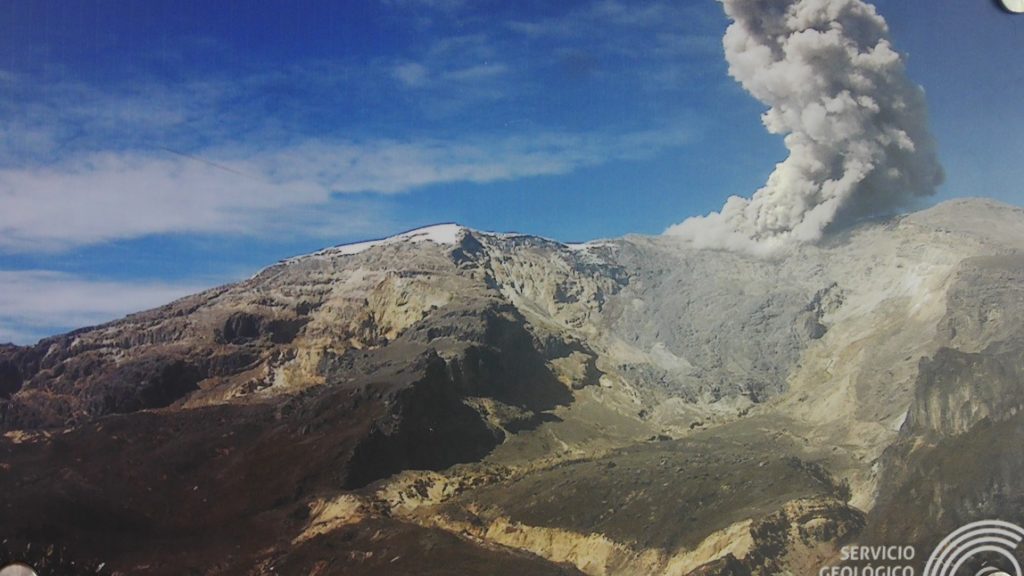
We head back to the ruins, cross back over the main road, and a few hundred meters through the forest to a clearing and tomb of Omaira Sanchez. After the mudslide hit, the a 13-year-old girl was trapped up to her chin in slurry. Rescuers were unable to free her from the ruins of her house. She died after three agonising days, her eyeballs blackened by the toxins from the crush injuries she’d endured, surrounded by rescue workers who lacked the equipment to release her frail body.
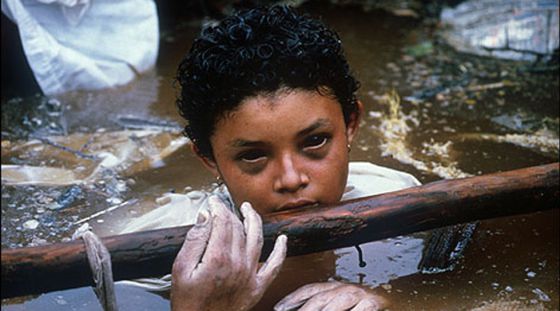
While trapped she was filmed by news teams and her haunting image and soft voice was beamed to the world. She talked about finishing her school work. Asked her mother to pray for her rescue. Then she comforted her own rescuers and insisted they help others before her. This harrowing footage ensured that Omaira would forever be the symbol of Armero, crushed but selfless to the end.
Today Omaira comes up in any internet search on Armero, and I’ve made many searches out of curiosity and preparing for the trip. Visions of her sad death have gnawed at me for months, and I often think about her. But nothing quite prepares me for the wave of emotion that rises within me as I now stand at her shrine.
Around me a green riot of the shady tropical trees, buzzing insects, bustling birds, strolling sightseers. It all slides out of focus and I feel the strength of nature that took the town and Omaira, I feel helpless to help her, helpless like those rescuers who held her hand back in 1985, helpless like everyone who has ever gawked at her face on Youtube – several million at the last count – and helpless like all the penitents that bend to her tomb to ask favours. ‘Gracias Omaira, por los favores recibidos’.
It’s then I realise why I needed to come to Armero: to understand.
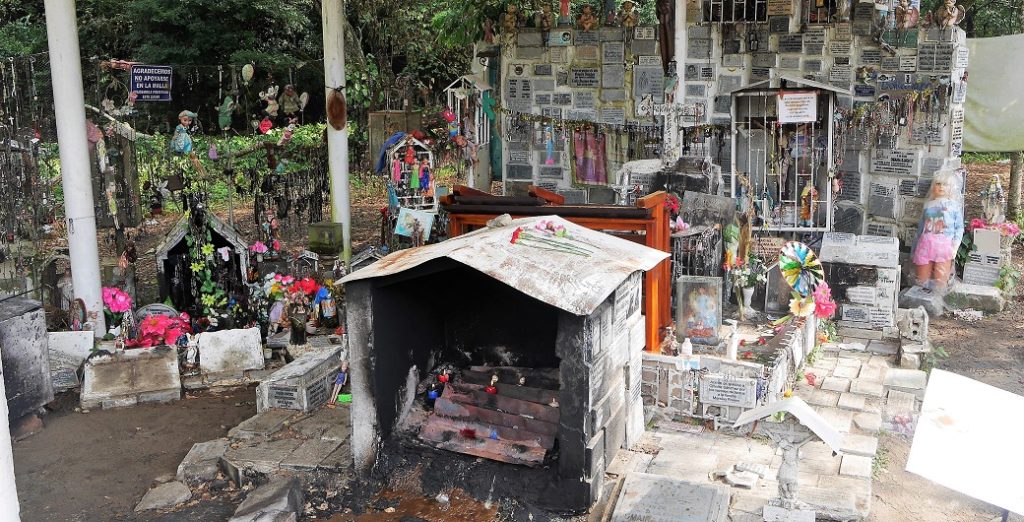
Practical stuff:
Armero is six hours from Bogotá via Honda and Maraquita, or five hours via Vianí and Camboa (a beautiful though less-used road). A good access point and overnight stop is Maraquita, you can find plenty of cheap hotels. From there you can get a taxi or local bus to the ruins, which are 30kms along the main road to Ibague.
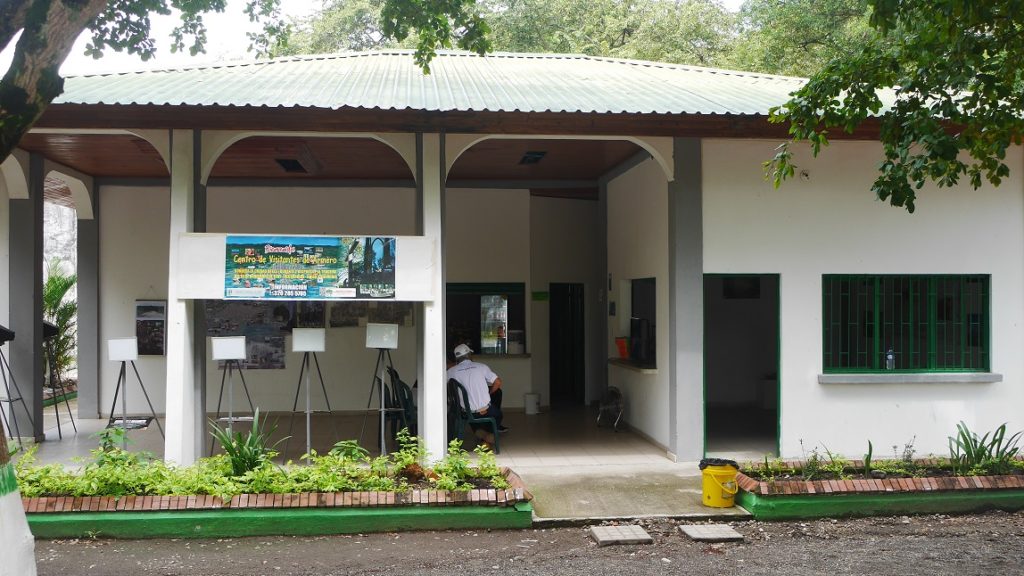
At the ruins a small visitor centre shows films and photos of the town before and after the disaster and can provide a guide to take you around the ruins. Allow three hours for a visit. Payment is discretionary: there is a contributions box at the visitor’s centre and most people give 20,000 to 50,000 to the guide depending on how much time. Bring repellent for the mosquitoes, a sun hat, and something to drink.
